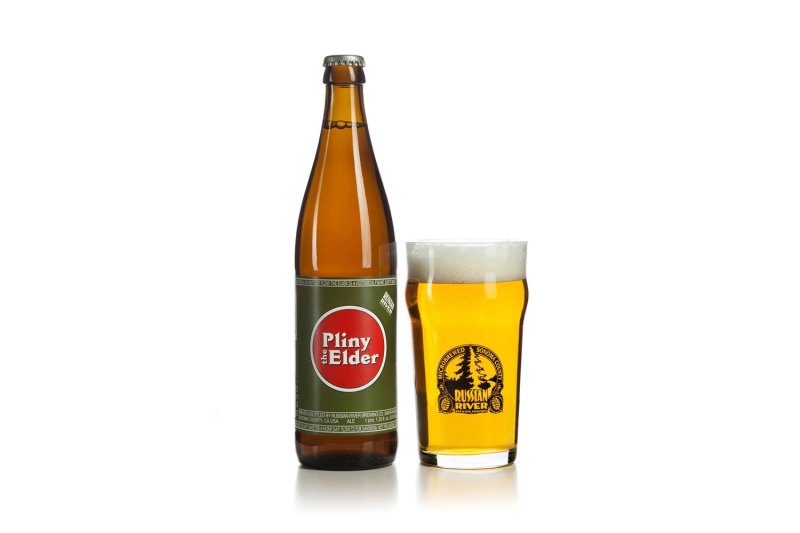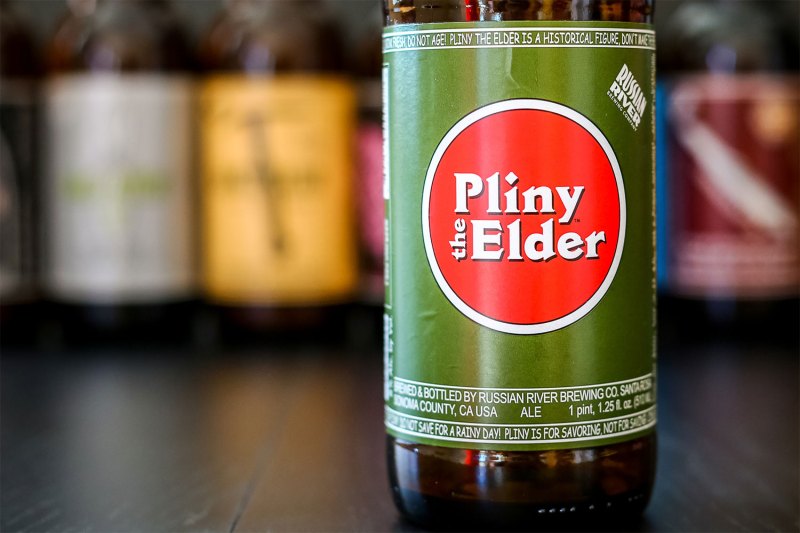There are few American beers more celebrated than Pliny the Elder. Russian River Brewing’s iconic Double IPA is the stuff of legends, attracting long lines and a wildly devoted fanbase. It’s also responsible for some of the most brilliant marketing tactics in domestic craft.
Andrew Harmon of BeerMongers in Portland knows the product well. The decade-old bottle shop has been working with Pliny for a while. He says the beer is a case study in marketing as well as the role of the internet and social media in beer. On top of that, he credits a very talented brewer.
“For a while, it was a running joke — and very real reality — that at least once a shift I would get a call asking if we had Pliny the Elder on tap,” he says.
Keep in mind this is Portland, nicknamed Beervana, where good craft ales virtually grow on trees. On top of that, the beer is the product of California, a state that is awarded a healthy amount of skepticism (rational and irrational) from many Pacific Northwesterners.
“I do think to a certain extent Pliny was kind of the first big beer to come out of the check-in beer nerd culture,” Harmon says. “It was on top of national beer media’s best-of lists for so long, and still is, and as the craft beer industry really took off in the late 2000s, people started traveling across the country to finally get to try it.”
Just a small handful of other limited-distribution offerings come to mind that inspire cross-country road trips. Harmon mentions Indiana’s Three Floyds and Heady Topper from beloved The Alchemist in Vermont.

Before the can craze, Russian River was delivering tiny lots of 16-ounce bottles to select markets. The label popped in a simple, timeless, and eye-catching sort of way. It’s always reminded Harmon of the classic Lucky Strike branding. “They’re also the only brewery ever that’s been able to get away with using Comic Sans MS on their labels for so long,” he says. “I’m sure their marketing department has had so many critiques on that and probably only keeps it around for its tackiness.”
It helps that the beer is good. Debuting in 2000 at a local beer festival in California, Pliny set the bar for balanced West Coast IPAs. The beer, technically a double IPA, flexes plenty piney hop muscle but is round and highly approachable. It’s named after the 1st-century natural philosopher who is believed to be one of the first to reference hops in his writings.
Elder is made with Amarillo, Centennial, CTZ, and Simcoe hops. Russian River’s limited distribution and thirsty audience implies that it will do what any good IPA should: be consumed fresh.
The beer’s higher-octane sibling, Pliny the Younger, is also hugely sought-after. Harmon says the state of Oregon gets anywhere from four-to-six 1/6 barrels shortly after the beer is released (in February for San Francisco Beer Week). Years ago, BeerMongers played off of the social media craze and devout fanbase surrounding the Pliny beers and listed their draft allotment as “Miller High Life” to quell the demand and reward those in the know. “We still try to come up with a different name for it every year and ask that people don’t check-in on it until after the keg is gone,” he says.

Across the river at John’s Marketplace, another lauded Portland bottle shop, Pliny has just been tapped. A small group has already assembled to enjoy the beer, some touting Pliny shirts and hats. There are six or seven other very good beers on tap but only one thing is being ordered. And it’s barely the afternoon, for the record.
This kind of diehard shadowing is normally reserved for club soccer or French wine auctions, not for a relatively small California brewery still typing in Comic Sans. But when you get a fresh taste, it begins to at least make some sense. Even if you can’t get your paws on Pliny, Russian River’s other options (Blind Pig especially) almost justify the addictive culture.
But the quest for Pliny is a fun and worthwhile one, even if it ends with your favorite bottle shop being fresh out. There’s always Miller High Life.


